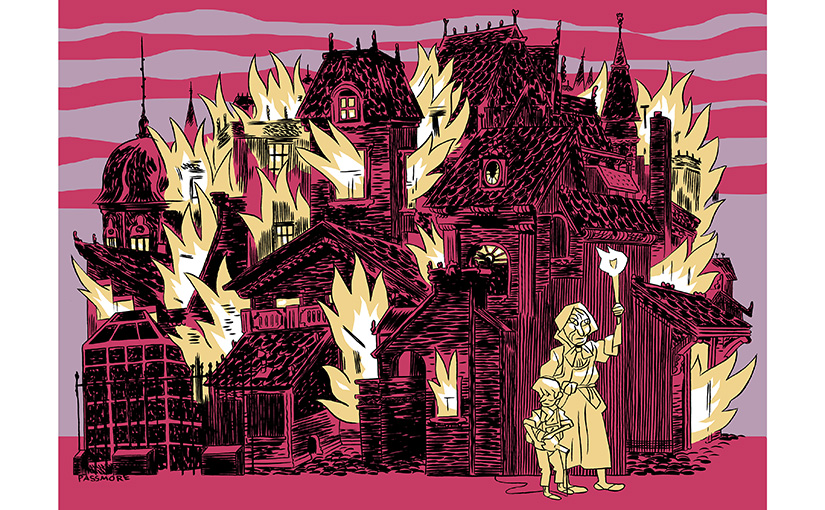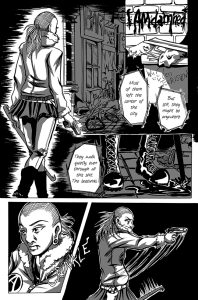by Wren Awry
To Begin . . .
“I’m interested in myths,” Angela Carter wrote, “Just because they are extraordinary lies designed to make people unfree.”
Carter was among the first to imitate fairy tales in her fiction (a little tome called The Bloody Chamber, anyone?), and her work highlighted the patriarchy and violence of the classic stories. While the myths Carter re-tooled came from story books, history is also rife with myths that made the world — myths that are ripe for turning inside out. It is these historical myths, and their connections to fairy tales, that fascinate me. I’m especially intrigued by one of them: that of the pétroleuses, fire-wielding women who supposedly set Paris ablaze during the Commune of 1871.
Furies glide through the rich quarters […] and fling their little vials of petrol, their devil’s matches, their burning rags.
The myth of the pétroleuses was certainly invented to make people unfree (in this case, by the Communardes’ conservative opponents and yellow journalists). [note] But I like pétroleuses because their fire and ferocity hint at interesting predecessors. Born of the collective fear of a power-hungry elite, pétroleuses follow in a long line of mythologized fire-wielding devil-women — women like Baba Yaga, the youngest sister in the Grimms’ “Fitcher’s Bird,” and the women burned during the great witch hunts of early Modern Europe.
Continue reading Baba Yaga Burns Paris to the Ground










